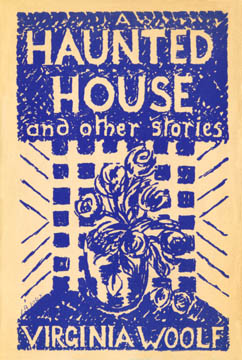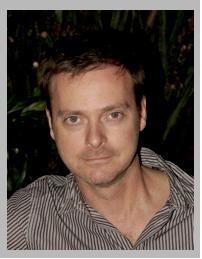
SmokeLong‘s “Flash, Back” series asks writers to discuss flash fiction that may be obscure or printed before the term “flash fiction” became popular, and tell us how these older or not widely-known works are meaningful. In this edition, Christopher Allen shares his experience reading Virginia Woolf’s “A Haunted House,” right in time for Halloween. Submit your own “Flash, Back” or other flash-related essays on our Submittable page!
By Christopher Allen
I was in graduate school during the Virginia Woolf craze. Remember that? When all the teenagers were screaming and fainting? Pulling out their hair? Putting rocks in their pockets. Claiming to be channeling Virginia’s ghost? Forget the Beatles; Virginia Woolf was our boy band.
I read everything. The journals. The letters. The essays. The novels. I read Orlando a decade before the film came out. You might say that I dived so deep into the person of Virginia Woolf that it’s a miracle I ever surfaced. Maybe it’s a tragedy. I’ve just reread Woolf’s story “A Haunted House” and am leaning towards the latter. She might have referred to it as a sketch, but as it continues to resonate with readers a hundred years later—it’s more. It’s flash fiction.
We should never ever stop reading Virginia Woolf. And that’s why I’m so happy to have this opportunity to dive right back into this haunting flash back.
One evening—I think it must have been October 1993—I got a call from a colleague of my father’s. He was enjoying a relaxed evening with a bottle of bourbon and he wanted to talk about Virginia Woolf. He needed to convince me that Virginia Woolf was crazy and her writing was a jumble, a bunch of nonsense scribbled down haphazardly for the rest of us to worry over. I think that was the upshot. Stream of consciousness was somehow on trial, and I was its advocate. Because back then we didn’t have caller ID, I found myself trying to teach this drunk guy the difference between reading and writing; meanwhile I had 200 pages of The Wings of the Dove to read. He was under the impression that stream of consciousness writing was unedited narrative vomit spewed onto the page for what it’s worth. Maybe that’s how it’s supposed to read, but that’s not how it’s (normally) written. No matter how I tried to convince this person that Virginia Woolf edited her prose (again and again and again), he simply did not believe me.
Virginia Woolf, you’ll be thrilled to know, went through the same process of writing that many of us go through: we jot, scribble, scrawl down the first draft of a story, put it aside to marinate for months-maybe-years, and take it back out when we think it’s right for a journal. And then we edit, and we edit. And we edit. And, it seems, Woolf’s very short stories fell under an even more scrutinizing eye.
Leonard Woolf, from the foreword to A Haunted House and Other Short Stories, drives this point home:
“It was her custom, whenever an idea for [a short story] occurred to her, to sketch it out in a very rough form and then to put it away in a drawer. Later, if an editor asked her for a short story, and she felt in the mood to write one (which was not frequent), she would take a sketch out of her drawer and rewrite it, sometimes a great many times.”
I did not become acquainted with Woolf as a short story writer. Before I read “A Haunted House,” I’d read To the Lighthouse, Mrs. Dalloway, Orlando, Between the Acts, The Waves, The Years, The Voyage Out, A Room of One’s Own and so on. I don’t actually know how I ran across the short story collection. It just appeared one day—or maybe it surfaced. It has been on my bookshelf for decades.
“A Haunted House,” the first story in the collection and one of the stories published in Monday or Tuesday (Woolf’s only short story collection published during her lifetime in 1921), is to my knowledge the first piece of flash fiction I ever read, and of course I had no idea what flash fiction was back then. “A Haunted House” is character-driven prose that has all the elements of Woolf’s longer works: tertian rhythms, effervescent language (bubbling, threshing, pulsing), a narrative that mirrors post-impressionism here and points towards cubism there. It’s so dramatic, maybe melodramatic by today’s standards, and a ghost/love story to boot.
“’Safe, safe, safe,’ the pulse of the house beat softly.” Then gladly, then proudly, then wildly. These moments lend structure and cadence (something so important to Woolf) to this story that I’ll read a hundred times and still find moments buried in its two and a half pages. What I find again and again is a love story. An enviable love story.
“A great many times,” Leonard Woolf told us of Virginia’s editing habits. You can be assured that Woolf chose each word carefully. Even if she wasn’t the sanest person around (and who really cares?), she was an editor. “A Haunted House” is a great introduction to Woolf’s style. All the elements are there. And here. And there. Here is a popular audio version read by Tom O’Bedlam. And a dramatic interpretation that’s pretty cool and a bit wacky and which has not received enough attention.
 Christopher Allen’s flash fiction has appeared or is forthcoming in The Journal of Compressed Creative Arts, Indiana Review, Camroc Press Review, Literary Orphans and lots of other beautiful places. His story “A Clown’s Lips” was the recipient of Ginosko Literary Journal’s award for flash fiction. SmokeLong Quarterly nominated his story “When Chase Prays Chocolate” for the Pushcart and included it in SmokeLong Quarterly: the Best of the First Ten Years (2003-2013). And he’s received a few other nods. Since 2014, Allen has been the managing editor at SmokeLong Quarterly. He lives somewhere in Europe. Find him online at @christopher_all or www.imustbeoff.com.
Christopher Allen’s flash fiction has appeared or is forthcoming in The Journal of Compressed Creative Arts, Indiana Review, Camroc Press Review, Literary Orphans and lots of other beautiful places. His story “A Clown’s Lips” was the recipient of Ginosko Literary Journal’s award for flash fiction. SmokeLong Quarterly nominated his story “When Chase Prays Chocolate” for the Pushcart and included it in SmokeLong Quarterly: the Best of the First Ten Years (2003-2013). And he’s received a few other nods. Since 2014, Allen has been the managing editor at SmokeLong Quarterly. He lives somewhere in Europe. Find him online at @christopher_all or www.imustbeoff.com.
